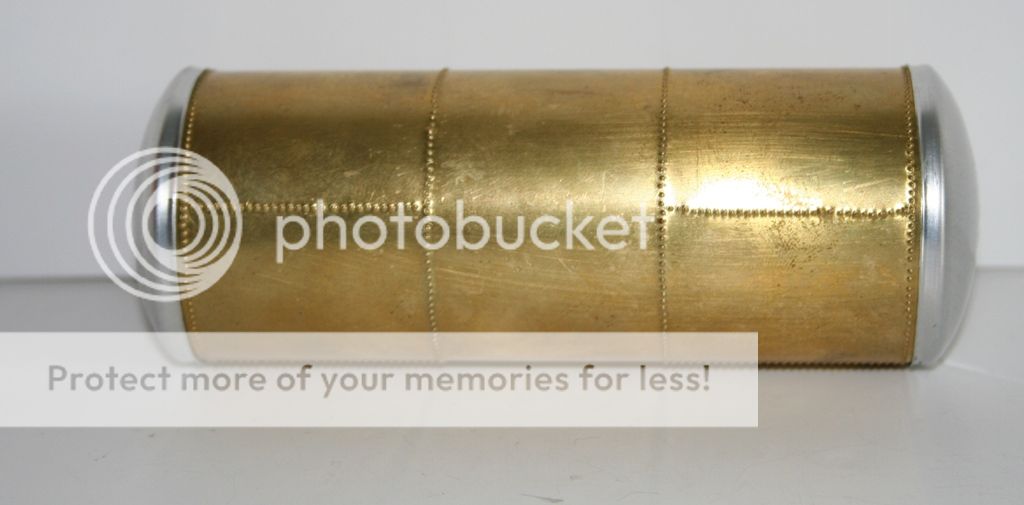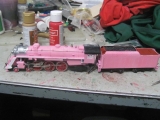Tank wagon measurements?
Posted
#222634
(In Topic #12143)
Full Member
Have not been able to find much information online
I want to try my hand at scratchbuilding British tanker wagons (specifically, the older kind with the wire ropes over the tank) since it'd be cheaper than importing and than using the ones in the Bachmann Thomas range. But I have had little luck in the way of finding drawings or written information that include the measurements of the tanks. Can anyone help me? At this point I'd settle for someone just measuring a Hornby or Bachmann model
Posted
Full Member
Presumably you mean the ones with diagonal cables.
From "Private Owner Wagons, A Fifth Collection":
Ipswich Sugar Beet factory Limited. "Molasses from Home Grown Beet". Tank measurements 17'4" long, diameter 6'7" on a 12 foot wheelbase.
TARMAC 14-ton tank wagon. 18'0" long, diameter 7'3" on a 10 foot wheelbase.
TARMAC tank wagon, 16'10" long, 6'1" diameter, 9'9" wheelbase.
Silvertown Lubricants Ltd. tank wagon, 18' long, 7'11" diameter, probably a 10'6" wheelbase.
Nigel
©Nigel C. Phillips
Posted
Full Member
Posted
Full Member
Posted
Full Member
Let me know if you want some pictures for the research.
Nigel
©Nigel C. Phillips
Posted
Full Member
What scale are you working in? I ask because the ends of Coke cans make really good tank ends in 7mm scale.
in true "Blue Peter" style here's one I did earlier (I must get it finished it's been a shelf queen for 3 or 4 years now).

 Last edit: by Rob Pulham
Last edit: by Rob Pulham
Regards Rob
Posted
Full Member
I could find pictures of the wagons just fine, but I'm not so great at precise scaling from photos, so what I most needed was some solid numbers on external diameter and length of the tanks so I would know what sizes of tubing would be good to use and how long to cut them
Posted
Full Member
Regards Rob
Posted
Full Member
Posted
Full Member
There was no such thing as a standard tank size for the wire strop type ones (criss-crossing wires). These were built pre-1930 and to the buyer/leasor requirements. Diameter/length and overall length/wheelbase was dictated by the density of the material carried. Oils and tars tended to have smaller diameters than water-based liquids. See my Response above. If you go for 16-18 feet long and 6-7 feet in diameter that covers a multitude (2.5"-2.85" long x 0.95"-1.1 diameter). Some 1" diameter pipe would pretty much do it. Diameter was limited by the loading gauge, normally 8-9 feet or so. A 10-foot wheelbase would cover most as well. Get some rivet decals, it's not worth trying to do your own. Of course you could always roll some up from 5-10 thou' brass and use solder.
Plastruct have some 1" OD pipe, TB-32 or AT-32. It's relatively expensive. I've used these for tankers. Or the hardware store plumbing section for some 1" thin wall hard copper pipe is an alternative. Or raid the medicine cabinet.
Sizing a diameter/length is an easy exercise if the photo is a straight-on one. Measure the wheel diameter, use that to scale the tank. That will give you ± 5%, normally good enough. If the picture is at an angle then the calculations for that get quite interesting, as the angle of the photo is needed. You can get that by measuring the apparent wheel diameters. Then it's pretty basic trigonometry. With the right software you can change the perspective to a straight-on one and forget the trig.
Nigel
©Nigel C. Phillips
Posted
Full Member
I'm rubbish at trig, could barely remember how it worked even when studying it. (plus I haven't even the foggiest how supposed to measure a wheel's true diameter just from a photo even if it's a side-on; I don't understand how that works..)
As for the rivets.. Yeah, sooo wasn't going to bother with them on this until I can get decals or a wheel. At any rate, I've got enough to be going on with
Posted
Full Member
Most wagon/van wheels were 3' 1.5" (3.125', 12mm in 4mm scale).
Measure the diameter of the wheel on the photo. As an example, it measures 0.8". Measure the diameter of the tank. As an example it measures 1.7". So the diameter of the tank is 1.7/0.8 x 3.125 = 6.64'. Divide that by 76, multiply by 12, you need a tube 1.04" in diameter.
Same for the length. Say it's 3", so 3/0.8 x 3.125 = 11.7'. Divide that by 76, multiply by 12, it's 1.85" long.
If it's a perspective shot it gets complicated.
Nigel
©Nigel C. Phillips
1 guest and 0 members have just viewed this.


